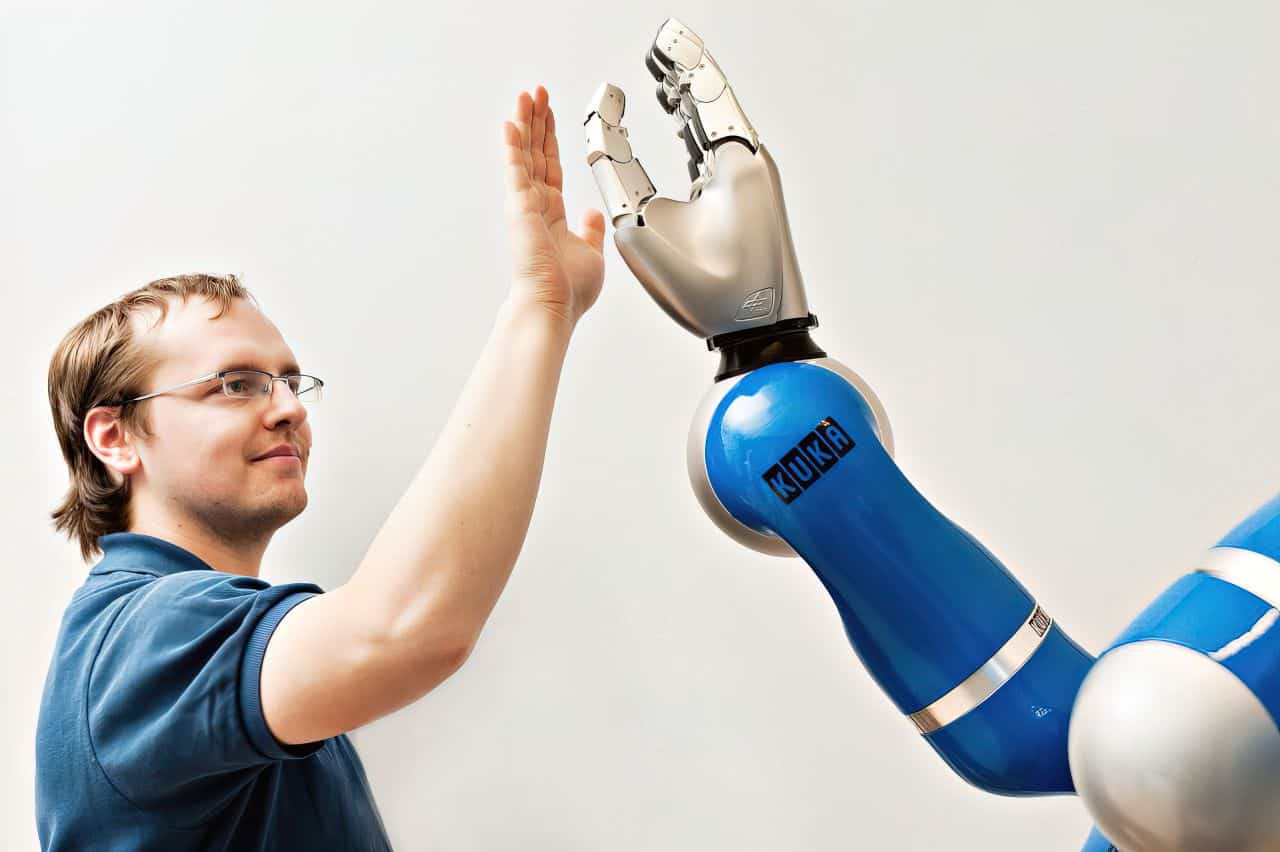What Are Cobots?
A collaborative robot is also known as a cobot. Cobots are robots that were created to work close to humans. Collaborative robots are drastically different from traditional robots because they are used in industrial spaces. What makes them different is that traditional robots used in industrial areas were designed to be used in spaces not close to humans. A cobot was created to have the ability to collaborate with humans in a work environment so the two of them can get a task done effectively and efficiently. A collaborative robot can function safely and in conjunction with humans because they are made of lightweight materials that operate at a safe speed level without a lot of force. These robots are also constructed with rounded edges, sensors, and special software that encourages safe behaviors around humans to prevent injuring any humans that come into contact with the robot.
The history of Collaborative Robots
The first collaborative robots were created in 1996 by two Northwestern University professors named Michael Peshkin and J. Edward Colgate. The two gentlemen got the patents for collaborative robots in 1997 and they called the patent “Cobots.” The definition that they provided for the invention to the patent office was that it was an invention made to provide the ability for humans to have physical contact with a general-purpose manipulator controlled by the computer. The initial collaborative robot that was first ever used guaranteed human safety because it had no internal power source. The power for the collaborative robot was provided by the human worker when it was first used.
Collaborative robots are used in many different ways and many different spaces. The most common spaces in which collaborative robots are used are warehouses, industrial settings, and manufacturing facilities. They can be used as service robots, automated robots, or logistics robots. When used as service robots, it is often used in a public space. When you use a logistic robot, it is often used inside a facility and helps transport materials. It helps people with unergonomic tasks such as assembly operations, moving heavy parts, and machine feeding when used as an automatic robot.
The four types of collaborative work environments that exist between human workers and collaborative robots are number one. They can work side by side with no fence, but the workspace is not shared. The second type of collaborative work environment that humans and robots partake in is a shared work environment, but they do not do the same work simultaneously. The third type of work environment is when the robot and the human work on the same part simultaneously. The fourth type of work environment is when the robot responds to the worker’s movement in real-time.
The Advantages of Using Collaborative Robots In Manufacturing
More prominent companies have always used collaborative robots for manufacturing. Collaborative robots allow companies to save on cost and simultaneously speed up their operations. Initially, collaborative robots could only be afforded to be used by big companies, but the advancement of technology has allowed these robots to be used by small and medium-sized companies also. In manufacturing spaces, collaborative robots are often used for picking, placing, and packing. Collaborative robots are also used for quality control and heavy lifting in a manufacturing facility. The reason manufacturing facilities like to use collaborative robots is that they are easy to use, eliminate the need for workers to do repetitive tasks, and are more flexible than traditional industrial robots so that they can perform a variety of other different jobs.
How Collaborative Robots Assist With Heavy Lifting In Manufacturing Facilities
Collaborative robots assist human workers with heavy lifting in manufacturing facilities because some can organize, transfer, and lift goods without being manually operated by humans. This helps to decrease the possibility of injury to human workers from heavy machinery such as forklifts.
How Do Collaborative Robots Assist With Picking, Placing, And Packing In Manufacturing Facilities?
Collaborative robots are used to assist with picking, placing, and packing in manufacturing facilities because they eliminate any mistakes made by humans doing these particular processes. Collaborative robots also give the manufacturer the ability to deliver products faster and more efficiently. Collaborative robots also cut down on any return request because packing errors are decreased.
Collaborative robots are used across many different industries and settings, such as warehouses and manufacturing facilities. These robots have proven to be cost-effective because they help manufacturing facilities or warehouses be more efficient and productive at a fast pace. These robots also allow the manufacturing facility to use its human employees in other vital ways that do not put them at risk of getting injured. Since the first collaborative robots were invented, it is clear that the usage and function of these robots have evolved with the advancement of technology.

